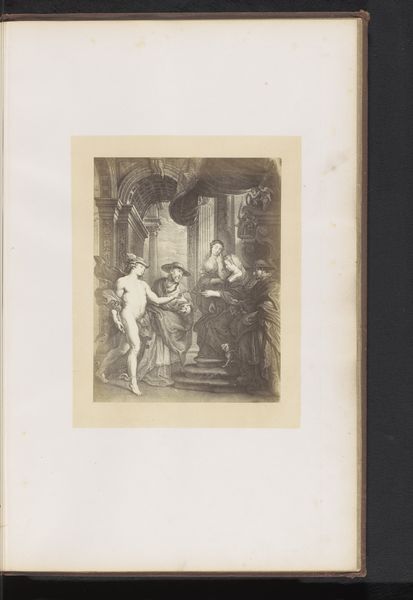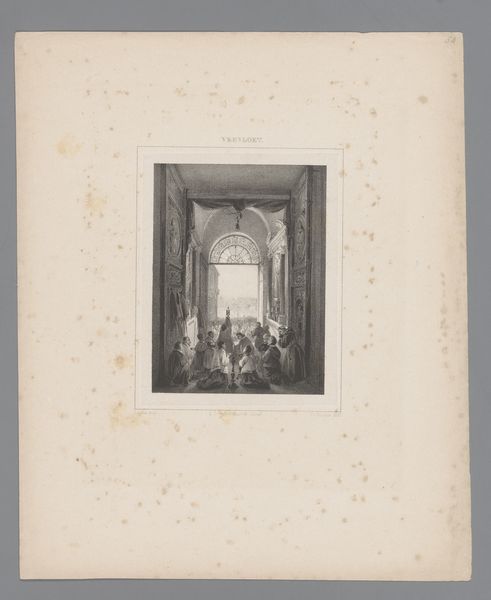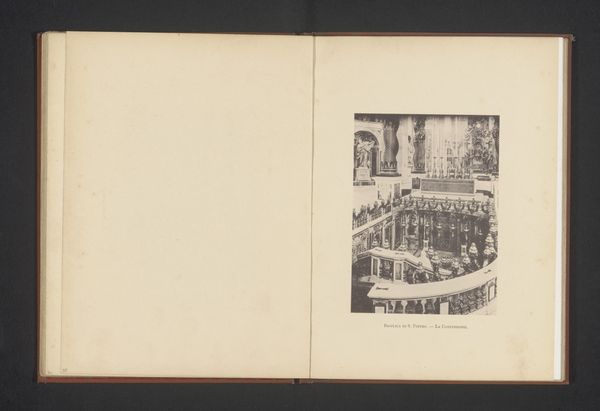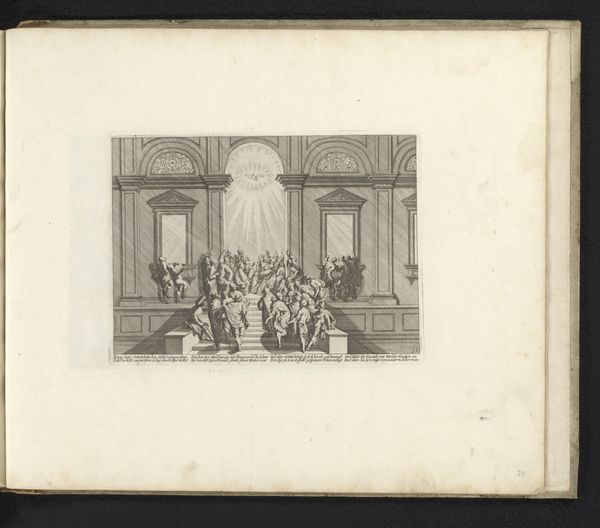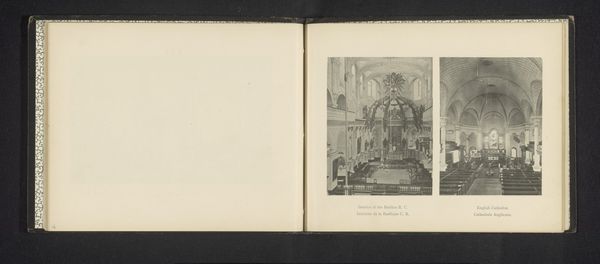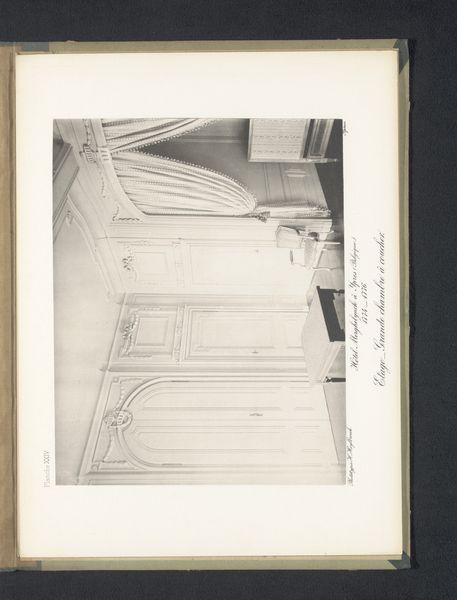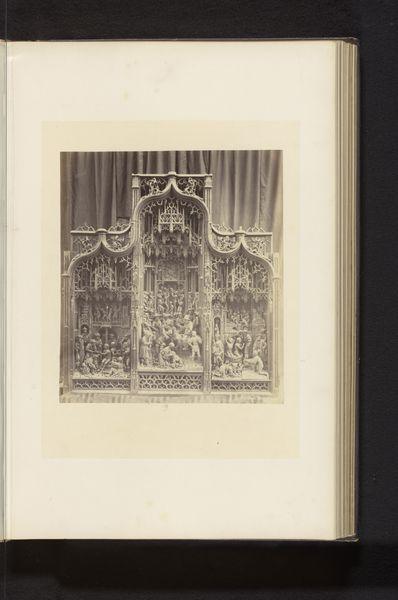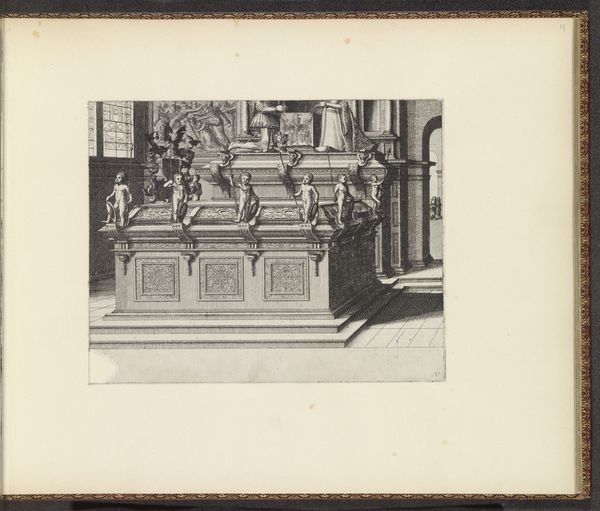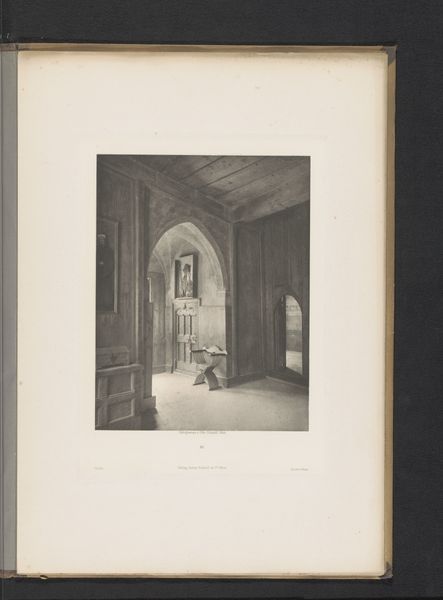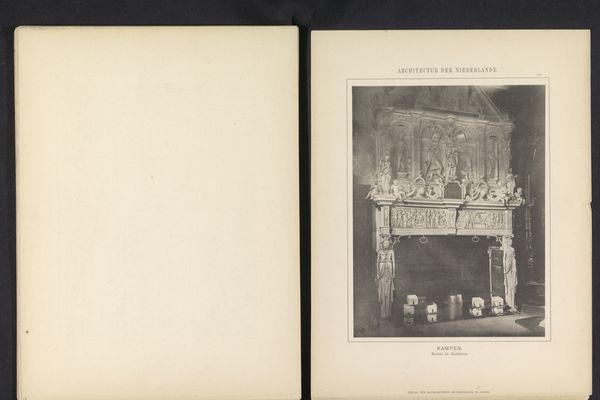
Dimensions: height 242 mm, width 183 mm
Copyright: Rijks Museum: Open Domain
Editor: This is a photograph taken before 1893, showing the "Kansel in de parochiekerk van Bolzano, Italië" or Pulpit in the parish church of Bolzano, Italy, attributed to Otto Schmidt. It's very gothic, and there’s such detail; the stone carving seems so elaborate. What symbolic meaning would an ornate pulpit like this carry? Curator: Well, let's consider the visual language here. Notice how the crucifix, though small in the image, still dominates due to its placement above the pulpit and the contrast against the dark background. It’s a powerful symbol of sacrifice and redemption. The pulpit itself is adorned with carvings of biblical scenes, prompting the viewer to connect with stories they have heard preached. Editor: So, the viewer is being invited into this long history? Curator: Exactly! Gothic architecture often uses verticality to suggest transcendence. What does this mean psychologically, when you're in the presence of a building built this way? Editor: I guess it impresses upon you your own smallness or fragility and hints at reaching toward something higher. And is that why pulpits became so ornate? Curator: Precisely. This visual richness serves a pedagogical function: it immerses the congregation in sacred stories, reinforcing faith through spectacle and artistry. Consider how impactful these symbols and this architecture were before widespread literacy. The imagery becomes a powerful tool of communication. What do you think the longevity of these symbolic structures means? Editor: It’s interesting to consider how structures like these hold cultural memory. Thank you, I’ve certainly gained a richer perspective on it. Curator: It’s a fascinating example of how religious iconography and architectural design coalesce to convey profound meanings. I appreciate your insights!
Comments
No comments
Be the first to comment and join the conversation on the ultimate creative platform.
